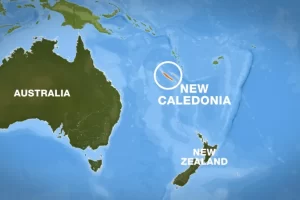Vanuatu and New Caledonia are no longer in danger of a tsunami, but New Zealand has issued a warning about severe currents and coastal surges.
The US Geological Survey said on Friday that the magnitude 8.0 earthquake occurred at a depth of 37 kilometers (23 miles), and governments all throughout the Pacific region issued warnings about the potential for tsunamis.
According to the Pacific Tsunami Warning Center, waves that were less than half a meter (1.5 feet) in height were detected off the coast of Lenakel, which is a port town in the nation of Vanuatu. Waves of a lesser height were recorded in other areas off the coast of Vanuatu and New Caledonia.
According to an information bulletin notice, the National Disaster Management Office of Vanuatu had previously warned residents to evacuate from coastal regions to higher ground.
Later in the day, the tsunami warning was canceled in New Caledonia as well, where authorities had earlier been forced to evacuate the shore and tsunami sirens had been triggered.
However, a danger alert has been issued for Lord Howe Island, which is approximately 780 kilometers (421 nautical miles) northeast of Sydney in the Tasman Sea. The Bureau of Meteorology in Australia has said that there is no threat of a tsunami hitting the Australian mainland.
Along New Zealand’s coastline, the National Emergency Management Agency warned that strong and unusual currents as well as coastal surges might be expected; however, the agency also stated that there was no need to evacuate because inundation was not anticipated.
On Friday evening, a national alert continued to be in effect for New Zealand, telling individuals who were in or near the water to “move out of the water, away from beaches and shore areas, and away from harbors, marinas, rivers, or estuaries.”
According to the Pacific Tsunami Warning Center, there is a chance that smaller waves will affect a number of Pacific islands, including Guam, Fiji, Kiribati, and Papua New Guinea.
The region is a component of what is known as the “Ring of Fire,” which is an arc of seismic faults that circles the Pacific Ocean and is the epicenter of the vast majority of the world’s earthquakes.
